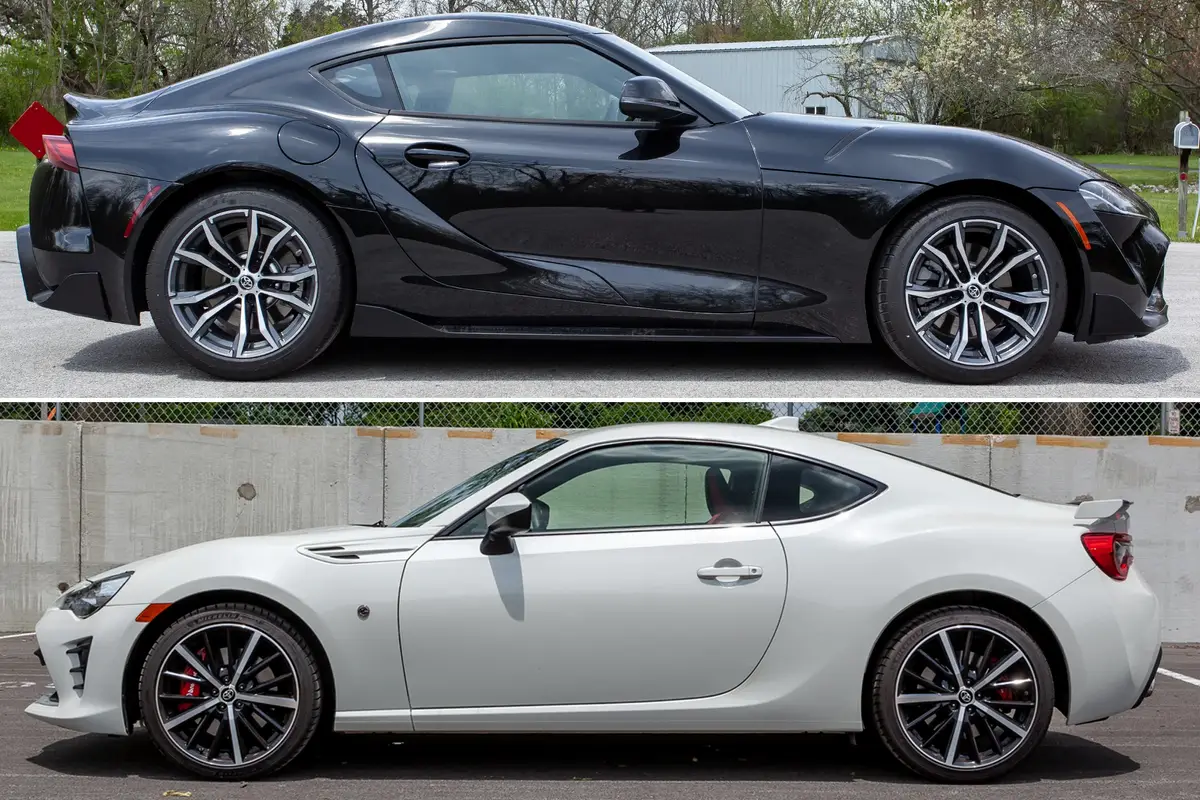The automotive world is teeming with enthusiasts who relish in the nuances that differentiate one car from another. Among the most debated topics in recent years has been the question: “Is a Toyota 86 a Supra?” On the surface, the two models might seem connected, but are they really cut from the same cloth? Let’s dive into the details and separate fact from fiction.
Understanding the Roots
To fully grasp the relationship between the Toyota 86 and the Toyota Supra, we must first explore their origins. The Toyota 86, developed in collaboration with Subaru, was introduced in 2012 as a modern take on the classic sports coupe. Known for its lightweight design, rear-wheel-drive layout, and engaging driving dynamics, the 86 quickly garnered a loyal following among enthusiasts.
In contrast, the Toyota Supra has long been an icon in the sports car arena. With a legacy that dates back to the late 1970s, the Supra is celebrated for its performance, turbocharged engines, and tunable platforms. The latest iteration, launched in 2019, is a collaboration with BMW, sharing its chassis and engine components with the BMW Z4.
Performance Parallels
At first glance, the performance metrics of the 86 and the Supra suggest a world of difference. The Toyota 86 is powered by a naturally aspirated 2.4-liter flat-four engine that delivers around 228 horsepower. This powertrain is designed for a nimble and responsive driving experience, perfect for winding roads and track days.
Conversely, the Supra boasts a turbocharged inline-six engine, producing upwards of 335 horsepower (with some models exceeding 400 hp). This power translates into blistering acceleration and a top speed that the 86 simply cannot match. The Supra’s focus is on speed and performance, while the 86 emphasizes driver engagement and balance.
Design Divergence
Visually, the two cars are distinct. The Toyota 86 is compact, with a sleek coupe silhouette that showcases its sporty nature; Its design is minimalistic and functional, with a focus on aerodynamics and efficiency. The interiors are driver-centric, reflecting a philosophy aimed at enhancing the driving experience.
On the other hand, the Supra presents a more aggressive and muscular appearance. With bold lines and a striking front fascia, the Supra’s design commands attention. Inside, it leans towards luxury, with high-quality materials and cutting-edge technology. While both cars prioritize the driver, the Supra offers a more refined and upscale experience.
Target Audience and Market Position
Understanding the target audience for each model is critical in distinguishing them. The Toyota 86 is aimed at driving purists—those who appreciate the thrill of a lightweight sports car that rewards skillful driving. It’s often seen as an entry-level performance car, appealing to younger enthusiasts and those seeking a fun yet affordable sports coupe.
The Supra, with its higher price tag and performance capabilities, targets a different demographic. It attracts serious sports car enthusiasts willing to invest in a vehicle that offers a blend of performance and luxury. The Supra is often viewed as a dream car for many, continuing the legacy of speed and power that has defined it for decades.
So, is a Toyota 86 a Supra? The answer is a resounding no. While they share the Toyota badge and embody the spirit of driving enjoyment, they cater to different audiences and philosophies. The 86 is an accessible sports coupe that prioritizes agility and driver engagement, whereas the Supra is a high-performance sports car designed for speed and power;
In the end, both cars have their unique charm and appeal. Whether you lean more towards the raw, connected feel of the Toyota 86 or the exhilarating speed of the Toyota Supra, one thing is clear: Toyota has successfully crafted two distinct vehicles that celebrate the joy of driving in their own ways.
Comparing the Community and Cultural Impact
Beyond the numbers and specifications, the cultural significance of the Toyota 86 and the Supra cannot be overstated. The Toyota 86 has become a symbol of grassroots motorsport, resonating with a community that values the art of driving. It thrives on social media platforms, where enthusiasts share their modifications, track-day experiences, and driving tips. The 86 has even inspired a wave of aftermarket parts and tuning shops, making it a canvas for personalization and creativity.
The Supra, on the other hand, enjoys a legendary status that transcends the automotive realm. With its appearances in blockbuster films like “The Fast and the Furious,” the Supra has cemented itself as a cultural icon. It’s not merely a car; it represents aspiration, performance, and a rich heritage that many dream of emulating. The Supra’s ability to attract attention and admiration, both on and off the track, places it in a league of its own.
Affordability vs. Performance Investment
When we talk about price, the differences between the Toyota 86 and the Supra become even more pronounced. The 86 is known for its affordability, making it accessible for a broader range of buyers. It’s the kind of car that invites new drivers into the world of performance without the burden of a hefty price tag. This accessibility fosters a community of enthusiasts who are eager to learn and share their experiences.
In contrast, the Supra commands a premium price, reflecting its high-performance capabilities and advanced technology. For many, purchasing a Supra is an investment—one that promises a thrilling driving experience and a pedigree that can be cherished for years. However, this price point can be a barrier for some, limiting its audience to those who are more serious about performance and can justify the expense.
The Future of Both Models
As we look ahead, both the Toyota 86 and the Supra are likely to evolve in their own unique ways. With the automotive industry shifting towards electrification and sustainability, there’s an ongoing debate about how these iconic models will adapt. Will the 86 continue to focus on delivering pure driving pleasure, or will it incorporate hybrid technology to remain relevant? Will the Supra embrace more advanced performance hybrid systems, further blurring the lines between traditional sports cars and the new wave of high-performance vehicles?
Only time will tell, but one thing is certain: both models have carved out their niches and continue to inspire the automotive community. Whether you prefer the lightweight agility of the 86 or the raw power of the Supra, there’s no denying that these two cars, while distinctly different, are both integral to the Toyota legacy.
Ultimately, while the Toyota 86 and the Supra share a common heritage, they represent different philosophies in the world of automotive design and performance. The 86 invites drivers into a world of connection and engagement, celebrating the joy of driving in its purest form. The Supra, on the other hand, stands as a beacon of power and prestige, embodying the aspirations of sports car enthusiasts everywhere. In this tale of two icons, it’s not a matter of which is better but rather how each car contributes to the rich tapestry of automotive culture. As fans of the automobile, we are fortunate to have both, each offering its unique allure and excitement.

